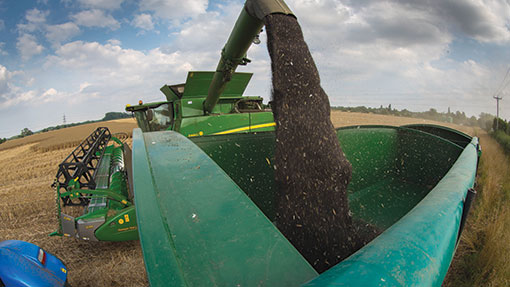Prospects look good for oilseed rape harvest

Harvest prospects for oilseed rape growers look encouraging, and with some sunshine in June, yields should be good and help offset the slide in rapeseed prices.
Crop experts are forecasting average yields could be about 3.5t/ha after a mild winter and relatively good weather during the critical flowering period.
There are concerns that sclerotinia disease was encouraged by a wet May and a lack of sun may limit yields, but most are cautiously optimistic about the harvest.
“The yield potential should be high. We have had good light levels at flowering and quite dry weather, which is usually an advantage,” says Pete Berry, oilseed rape expert at crop scientist group Adas.
He adds there is little lodging being seen in crops as growers have established low plant populations, delayed nitrogen in the spring and used plant growth regulators.
See also: Harvest expectations pressure oilseed rape markets
There is a potential problem with a wet May increasing the risk of sclerotinia, but with such a thick crop, it is difficult to assess how widespread the disease is at the moment.
David Leaper, arable technical manager at farmers’ co-operative Openfield, says crop canopies show a good pod depth, giving good light penetration, and little lodging.
“The potential is good, with growers needing a reasonable yield to offset the low rapeseed price. All we need is some sunshine in June,” he says.
The big positive compared with last year is there are wall-to-wall crops this season and not the patchy crops seen last spring coming out of the very wet winter, Mr Leaper adds.
Owen Cligg, trading manager at United Oilseeds, expects a national crop of about 2.4m tonnes from a 680,000ha autumn- and spring-sown crop, yielding on average 3.5t/ha. This is ahead of the 2013 crop of 2.1m tonnes from a harvested area of about 640,000ha.
“Prospects look good, but prices are on the retreat,” he says.
Post-harvest crop is selling at about £250/t, down £20-30/t on prices two months ago, pressured by the prospect of a good harvests in Europe and around the world.
A 2.4m tonne crop would be the third highest on record after 2011’s 2.8m tonnes and 2012’s 2.6m tonnes from higher areas, while a yield of 3.5t/ha would put it second after 2011’s bumper 3.9t/ha yield.
Lower prices and potentially higher growing costs are currently not deterring growers, with seed orders currently running at normal levels for autumn 2014 drilling.
“We are seeing no evidence that growers are being putt off oilseed rape. It is disappointing that the rapeseed price has gone down, but cereal prices have also gone down,” says Mr Leaper.
There is concern about control of cabbage stem flea beetle, with neonicotinoid seed treatments now being banned by the European Union for the crop.
These seed treatments probably add about £6/ha to costs, but now growers may have to use two or three pyrethroid sprays as an alternative way to control these beetles.
In addition, experts are warning that slugs could be a big problem this autumn after a mild winter and wet May helped slug survival and egg laying this spring.
Dr Berry says despite added pest problems and lower prices, it is difficult to see an obvious alternative crop. Leading up to harvest, he is hoping for bright cool conditions with sunshine to help yields, but not too hot to bring on early senescence.
“Yields of 3.5-3.6t/ha are well within reach this summer compared with the long-term average of 3.2t/ha,” he says.


